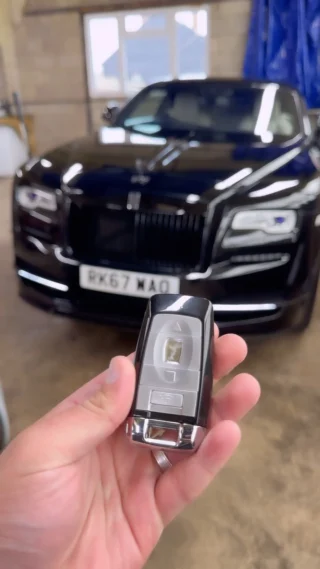15 Strange Hobbies That Will Make You Smarter At Broken Key Repair

Broken Key Repair: Solutions for Common Lock Issues
Introduction
Keys are vital tools in our lives, allowing us to protect our homes, cars, and individual belongings. However, they can likewise break, causing aggravations and hassles. Understanding how to address broken car key cutting service is essential for anyone desiring to preserve their locks and guarantee access to their property. This article covers numerous elements of broken key repair, consisting of common causes, repair methods, and preventive procedures to prevent future instances.
Typical Causes of Broken Keys
Keys can break for a number of factors. Comprehending these causes can assist in preventing future incidents:
- Wear and Tear: Over time, keys can wear down due to regular use, leading to weakened shafts that are more most likely to break.
- Poor Key Design: Keys that are improperly developed may do not have structural stability, making them more vulnerable to breaking under tension.
- Inaccurate Key Usage: Using excessive force to turn a key, especially in a jammed lock, can quickly result in a breakage.
- Ecological Factors: Extreme temperature levels or direct exposure to wetness can damage metal keys, resulting in brittleness.
- Lock Malfunctions: A malfunctioning lock can put unnecessary stress on a key, triggering it to snap throughout operation.
Indications of a Broken Key
Identifying a broken key frequently comes with obvious signs. Here are some indicators:
- Partial insertion into the lock: If the key can not be fully inserted or gotten rid of.
- Abrupt resistance: If the key feels stuck when being turned.
- Noticeable splits or fractures: Inspecting the key can reveal fractures or breaks in the metal.
- Insufficient engagement: The key might turn less than required to activate the lock.
Techniques for Broken Key Repair
When faced with a broken key, there are numerous methods to consider for repair. It is important to pick the best one based upon your specific circumstance.
1. Get Rid Of the Broken Key
If a key breaks within a lock, the very first action is to remove the broken part:
- Use tweezers or needle-nose pliers: If a piece is protruding of the lock, gently pull it out.
- Place a key extractor tool: This customized tool can help extract lodged parts better.
| Tool | Best Used For |
|---|---|
| Tweezers | Shallow extraction |
| Key extractor tool | Deeply trapped key pieces |
| Lubricant spray | Alleviating extraction of stuck parts |
2. Superglue Method
For scenarios where a key has actually partially broken however is undamaged enough to remain gripped, the superglue strategy may provide a momentary fix.
- Clean the broken surface areas completely.
- Use a thin layer of superglue.
- Hold the pieces together for a couple of minutes until the glue sets.
Note: This approach is not a permanent solution and must be utilized with care as the repair can quickly stop working under functional tension.
3. Metal Epoxy
For a more robust repair, metal epoxy provides a stronger bond than superglue.
- Follow the instructions on the epoxy product packaging for preparing the adhesive.
- Apply to the broken location and hold up until set (typically a few hours).
4. Duplicate the Key
In circumstances where lock performance is vital, developing a duplicate key is typically the very best route:
- Visit a locksmith: Many locksmiths can replicate keys quickly and effectively.
- Utilize a key-tracing service: Some locksmith professionals use tracing approaches to cut an identical key based upon the residues.
5. Lock Replacement
When keys consistently break, it might be because of lock issues instead of key integrity. In such cases:
- Consult a locksmith to examine the lock's condition.
- Consider changing the lock totally if substantial damage or wear appears.
Avoiding Key Breakage
Avoiding key damage is typically much better than repair. Here are some useful pointers:
- Limit force on keys: Always turn keys gently to prevent unneeded tension.
- Routine key evaluation: Check for wear and change keys revealing indications of damage.
- Use a keychain: Prevent extreme bending by using a durable keychain.
- Lubricate locks: Ensure locks run efficiently to lower pressure on keys.
- Shop keys correctly: Avoid positioning keys in environments that can cause rust or rust.
Frequently Asked Questions About Broken Key Repair
1. Can car key maker repair a broken key myself?
Yes, you can attempt to repair a broken key yourself using techniques like the superglue or metal epoxy strategies. However, these are temporary repairs, and it is advisable to seek advice from an expert locksmith for a more durable solution.
2. Is it worth repairing a broken key?
In many cases, particularly with nostalgic or special keys, a repair might deserve it. For standard keys, duplication or replacement is typically more reliable and reputable.
3. How can I avoid my keys from breaking?
To prevent breakage, make sure that keys are not subjected to extreme force, frequently check them for wear, and keep locks well-maintained.
4. When should I seek a locksmith's aid?
If you are unable to remove a broken key from a lock or if the lock malfunctions frequently, it's finest to seek a locksmith's proficiency.
Broken keys can provide a substantial hassle, but they are manageable with the right technique. By comprehending the typical causes and available repair approaches, people can react effectively to key damage. Drawing from preventive measures will also assist preserve key integrity and performance. Ultimately, a proactive technique to key and lock upkeep can considerably lower the frequency of these irritating concerns.

